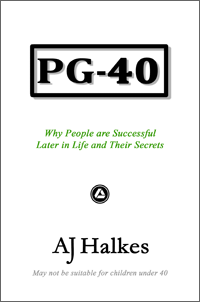| HOME | |
| PG-40 BLOG | |
| BIO | |
| Excerpts from the book | |

1963
Reinventor
With Sir James Dyson we stay in the hard, cold world of the electronics business, a world we have already visited when we explored the success of Akio Morita of Sony fame. Dyson however is a very rare species indeed; a successful inventor / designer who took the Dyson Dual Cyclone vacuum cleaner, his own product, to the market and succeeded spectacularly in his 50s.
The route taken by Dyson contrasts sharply with Frank Miller’s “risk-lite” approach though; while both showed belief in their vision and commitment to succeeding, Dyson was to take off on a 15 year, basically self-financed journey that brought him perilously close to bankruptcy and financial ruin. With an estimated worth of around 500 million pounds today he is now enjoying the late fruits of his creativity, risk taking and hard work.
Plain-old-James, as he was then, showed early promise as a designer and inventor. While still a student at the Royal College of Art he jointly designed the Sea Truck, an innovative working boat that has racked up around GBP500 million in sales around the world and is still being manufactured today. He also went on to design, manufacture and market the “Ballbarrow” replacing the wheel used in the conventional wheelbarrow with a ball creating a barrow that couldn’t get stuck in the mud, a theme his vacuums have recently incorporated. While the product was a success, sales of the Ballbarrow overtook sales of conventional wheelbarrows in Britain with three years, Sir James left the company due to business rather than creative differences with his partners....
Download the Chapter 18 FREE below

